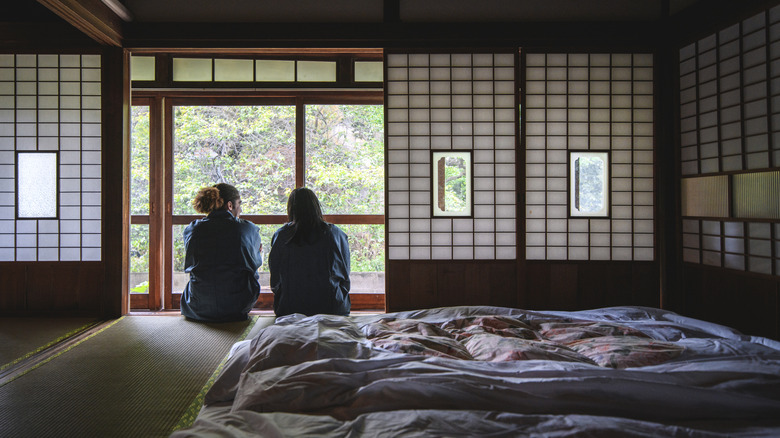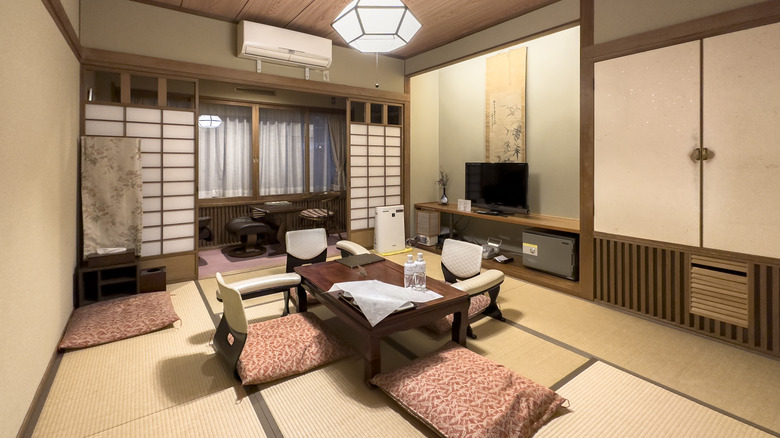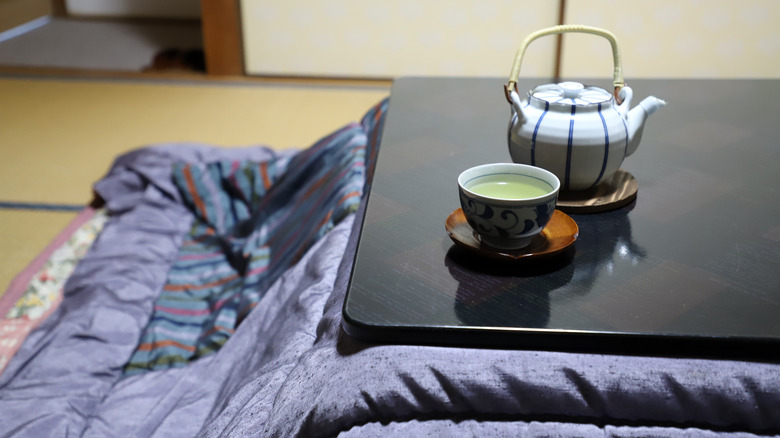The Chilling Detail To Know Before Staying In A Ryokan In Japan, Per Rick Steves
Ryokan are traditional inns found across Japan, and they offer a one-of-a-kind experience not available in most conventional hotels or Airbnbs. Booking a room in a ryokan is one of the best ways to immerse yourself in authentic Japanese interior design, the local onsen (hot spring) culture, and multi-course kaiseki meals. However, ryokan can also be a bit chilling, and not because of the ghost stories you may hear about the oldest ryokan in Japan (which also happens to be the world's oldest hotel). Ryokan can send literal chills down your spine due to their lack of central heating.
Travel guru Rick Steves wrote about a cold ryokan in an article on his website, where he detailed the frigid temperatures he encountered during a stay in Kyoto. "As is often the case in these traditional inns, there was no central heating," he wrote. "It was so cold I could see my breath — inside my room." The cold can get especially uncomfortable at night, which — if you're like Steves — is when you might be most likely to get up to use the restroom. And, unfortunately, the hallways leading to the toilet are likely to be just as freezing, if not more so, than your bedroom. If you struggle with frosty conditions, take note before booking a stay in a Japanese ryokan.
Most ryokan in Japan will offer small heaters to guests
While Japan might often be thought of as a warm-weather country, it's not a destination where it's summer all the time. Some areas are known to get cold, particularly in the winter. For instance, Tokyo's average temperature in January hovers around 40 degrees Fahrenheit, while the trending city of Sapporo in the north averages only 25 degrees Fahrenheit during the same month. With this in mind, you can assume that most ryokan will offer guests some kind of heating, though it likely won't be the balmy furnaces or central heating you might be used to in your own country.
Many ryokan work to maintain their old, traditional character, and as a result, modern heating is usually avoided. Instead, your room might be equipped with a small, portable heater. These heaters will generally only heat your sleeping area, not the bathroom or toilet room, so you'll likely still encounter some cold if you book a trip in the winter.
In other ryokan accommodations, you might find a heating and air conditioning unit attached to the wall. These are controlled by a remote and, similar to the portable heaters, only offer heating inside the room in which they're installed. Learning how to use a wall-mounted heater can take a bit of time (the buttons are almost always in Japanese, for one thing), but they're an effective way to keep the room warm, even while you sleep.
Other ways to stay warm in a ryokan
As Rick Steves pointed out in his article, not everything in a ryokan will be cold in the winter. To his delight, the toilet seats are often heated, so those middle-of-the-night trips to the bathroom don't have to feel so brutal. Thankfully, there are other ways to stay toasty besides hanging out on the porcelain throne. Most ryokan offer bathing facilities of some kind, whether it's a private onsen tub or shared showers and baths. Take advantage of what your ryokan has to offer, especially in the evening when the outside temperature drops.
Inside your room, you might also find a kotatsu, especially if the ryokan lacks modern heating. These appliances are essentially a heated table covered with a thick blanket. To use one, simply sit at the table with your legs tucked under the blanket and enjoy the warmth.
It's common for ryokan to provide traditional Japanese tea, and you may find a kettle in your room too. A cup of boiling sencha can often do the trick when you're feeling chilly. Finally, wear the provided slippers and yukata (robe), with your warmest undershirt and socks underneath. These might be small hacks, but they can help make your ryokan stay a more comfortable and pleasant experience.


